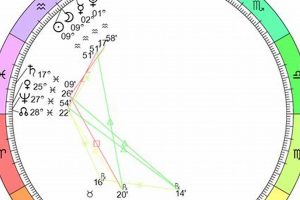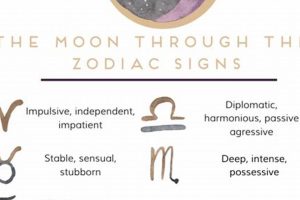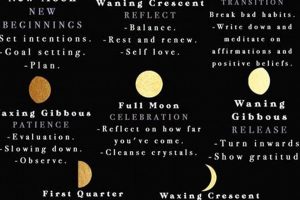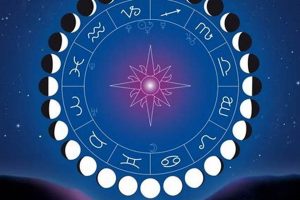
In astrological natal chart interpretation, the placement of the lunar body within the first house signifies a strong connection between one’s emotional nature and their outer persona. This positioning suggests an individual... Read more »

The June full moon is often referred to as the “Strawberry Moon” in traditional North American cultures. This name originates not from the moon’s appearance, but rather from the time of year... Read more »

A new moon in the astrological sign of Virgo signifies a period of focus on details, order, and practicality. This celestial alignment typically occurs once a year when the sun and moon... Read more »

The new moon in January 2025 represents the beginning of a lunar cycle. This particular lunation occurs within a specific astrological sign, influencing its energetic themes. For example, a new moon in... Read more »

In astrological practice, the moment the Sun and Moon align in the same zodiac sign marks the beginning of a lunar cycle. This celestial event is symbolically associated with new beginnings, fresh... Read more »

In astrological practice, the sign of the zodiac occupied by the Moon at the moment of an individual’s birth is a key component of their natal chart. This placement reveals the individual’s... Read more »

The current lunar phase, interpreted through the lens of astrological principles, provides insight into prevailing emotional and energetic influences. For instance, a new moon suggests a time for new beginnings and setting... Read more »

Lunar eclipses, viewed through the lens of astrological interpretation, are celestial events believed to hold symbolic meaning and signify periods of heightened emotional intensity, change, and transformation. These events occur when the... Read more »

Lunar astrology studies the Moon’s recurring phases and its influence on human behavior, emotions, and earthly events. For example, the new moon is often associated with new beginnings and setting intentions, while... Read more »

A system combining lunar cycles with astrological interpretations, this practice tracks the Moon’s journey through the zodiac signs and its phases. For instance, a new moon in Aries might be interpreted differently... Read more »


